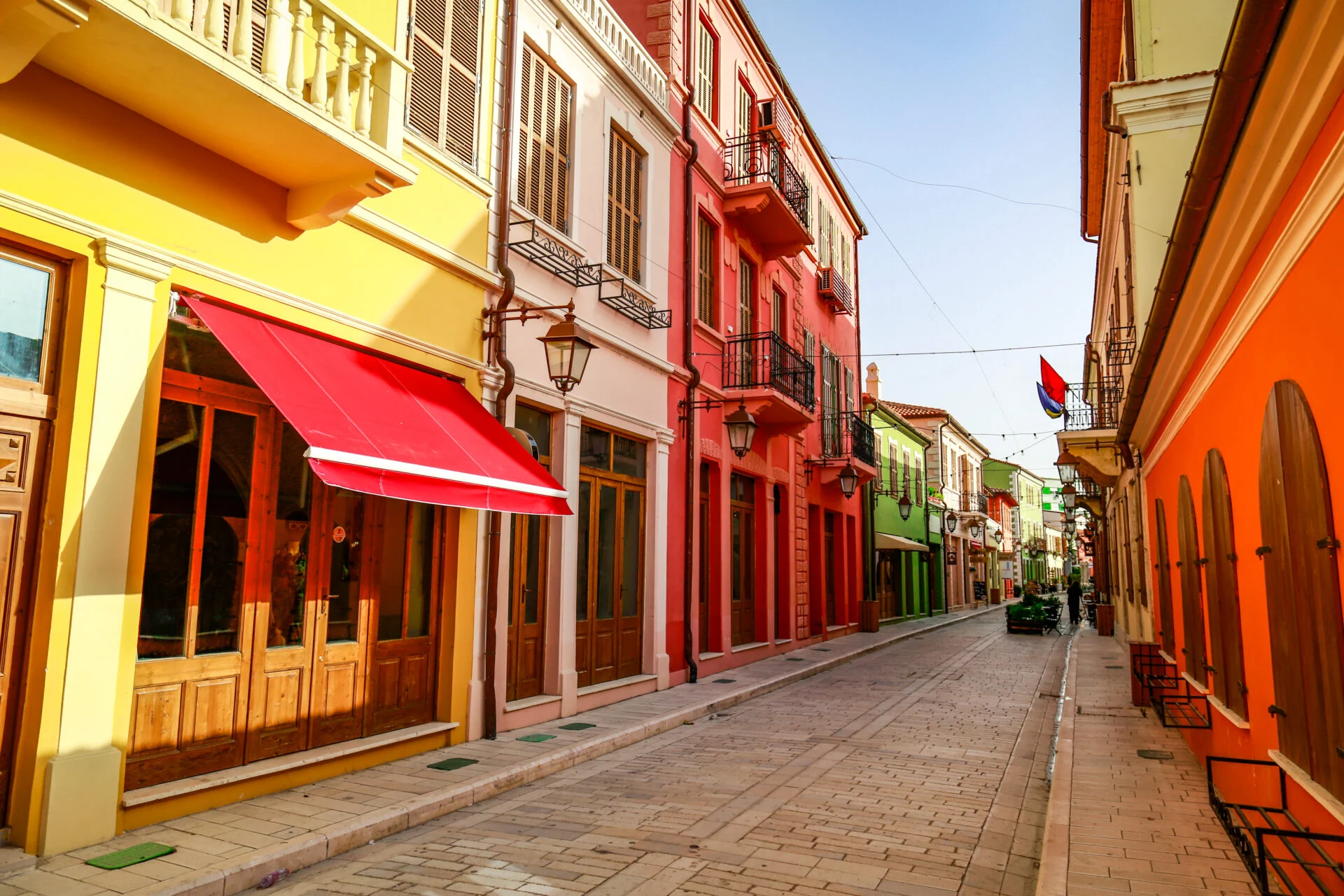
Key Takeaways
- Old Town Vlorë is a vibrant crossroads of history and culture with origins dating back to the 6th century BC.
- The city played a pivotal role in Albanian independence, notably through the Declaration of Independence in 1912.
- Its architectural treasures include the Independence Museum and Muradie Mosque, reflecting Ottoman and Illyrian influences.
- Vlorë’s traditions, festivals, and cuisine showcase the rich Albanian cultural tapestry and warm hospitality.
- Today, visitors can explore historic sites, enjoy scenic natural attractions, and experience authentic local customs.
Table of contents
- Historical Background of Old Town Vlorë
- Origins and Historical Events
- Influence of Varied Cultures and Empires
- Architectural Highlights
- Notable Buildings and Landmarks
- Preservation and Heritage Sites
- Cultural Significance
- Role in Albanian Culture
- Festivals and Traditions
- Visiting Old Town Vlorë Today
- Practical Information
- Exploring on Foot
- Nearby Attractions and Things to Do
- Conclusion
Historical Background of Old Town Vlorë
Origins and Historical Events
The origins of Old Town Vlorë date back to the 6th century BC, when it was established as the Illyrian settlement of Aulon. This ancient port played a vital role in maritime trade and cultural exchanges, which shaped its lively heritage. Throughout antiquity, Aulon served as a key strategic and commercial hub, attracting influences from various civilizations.
A defining chapter in Vlorë’s history was the Declaration of Independence on November 28, 1912, marked by Ismail Qemali. This moment declared Albania’s sovereignty and transformed Vlorë into the birthplace of Albanian independence. The event is commemorated annually with celebrations that foster national pride and remembrance.
During the tumult of the 20th century, Vlorë experienced occupation during both World Wars and changes under communist rule. These periods left a lasting impact on the city’s architecture, urban landscape, and collective identity, blending resilience with historical depth.
Influence of Varied Cultures and Empires
The cultural fabric of Vlorë has been woven by numerous empires and civilizations. The Illyrians contributed early foundations, followed by Roman, Byzantine, Ottoman, and Italian influences that shaped its identity over centuries.
Ottoman rule significantly impacted the city’s architecture, introducing mosques and Islamic art, with the Muradie Mosque standing as a prime example. The Italian influence in the 20th century brought modern urban planning and architectural styles, adding to the city’s diverse heritage.
The layered history of Vlorë reflects its resilience and capacity to adapt and evolve, blending multiple cultural traditions into a unique regional identity.
Architectural Highlights
Notable Buildings and Landmarks
Old Town Vlorë boasts several architectural treasures that narrate its rich past. At the forefront is the Independence Museum, set in the original site where Albania’s Declaration of Independence was signed. This site is essential for understanding the nation’s quest for sovereignty.
The Muradie Mosque, designed by the famous Ottoman architect Mimar Sinan, exemplifies Islamic architecture and religious history. Its intricate calligraphy and elegant domes are iconic images of Ottoman influence.
Traditional residences in Vlorë are characterized by stone walls, tile roofs, and wooden balconies, with some featuring the classic *Kulla*, a fortified house designed for protection and comfort. The Old City Square, or *Piazza e Vjetër*, serves as a bustling hub where historic buildings, cafes, and local markets create a lively atmosphere.
Preservation and Heritage Sites
Preserving Vlorë’s cultural heritage is a priority for national and local authorities. The Albanian Ministry of Culture actively works to safeguard historic sites, ensuring their protection for future generations. These efforts include restoring buildings, promoting cultural tourism, and maintaining museums.
Visitors can explore museums such as the Museum of Independence and the Ethnographic Museum, which offer insights into the region’s history, traditions, and everyday life of past generations.
Cultural Significance
Role in Albanian Culture
Vlorë stands as a national symbol, especially through the anniversary of the Declaration of Independence. The town embodies patriotic pride and is a cultural beacon for Albanians across the country. Its history as the birthplace of independence makes it a monument to national unity.
Festivals and Traditions
The town comes alive during major celebrations like Independence Day on November 28, featuring parades, music, and cultural performances that showcase Albanian traditions. Local festivals often include vibrant music and dance, such as *Valle* dances, and traditional crafts like woodwork and textiles.
Sampling local cuisine is a vital part of cultural immersion. Dishes like *Tavë Kosi* (baked lamb with yogurt) and *Byrek* (savory pastry) highlight the region’s culinary delights, complemented by fresh seafood, olive oils, and cheeses that reflect the Mediterranean influence.
Customs and Hospitality
In Vlorë, warm hospitality and traditional customs are part of daily life. Visitors often experience the generosity of locals through shared meals and storytelling, enriching their understanding of Albanian culture and strengthening cultural bonds.
Visiting Old Town Vlorë Today
Practical Information
Vlorë is easily accessible via Vlorë International Airport, providing flights from various European cities. Ground transportation includes buses, taxis, and private transfers, making travel within the region straightforward. Ferries operate connecting Vlorë to Italy, adding an international dimension to its accessibility.
The ideal visiting seasons are spring (April-June) and autumn (September-October), when the weather is mild and the crowds are smaller. Summer is lively but often crowded, so plan accordingly for a more relaxed experience.
Exploring on Foot
Old Town Vlorë encourages leisurely exploration by foot. Guided walking tours can take you through historic streets, highlighting key sites such as the Independence Museum, Muradie Mosque, and the Old City Square. As you stroll, enjoy cafes, shops, and street vendors that preserve traditional Albanian ambiance.
Nearby Attractions and Things to Do
Beyond the old town, explore the stunning Albanian Riviera beaches, relax in Llogara National Park’s mountain scenery, or visit the Orikum Archaeological Park to see ancient ruins. The region offers a mix of natural beauty and historical sites for all interests.
Conclusion
In summary, Old Town Vlorë is a treasure trove for history lovers, culture enthusiasts, and travelers seeking authentic Albanian experiences. Its rich tapestry of historical landmarks, vibrant traditions, and warm hospitality make it a compelling destination. Whether exploring its museums, savoring local cuisine, or enjoying scenic views, visitors are sure to leave with unforgettable memories.
Plan your journey to Vlorë and immerse yourself in the heart of Albanian heritage. Discover the stories that shaped a nation and enjoy the beauty of this timeless coastal town.


0 Comment